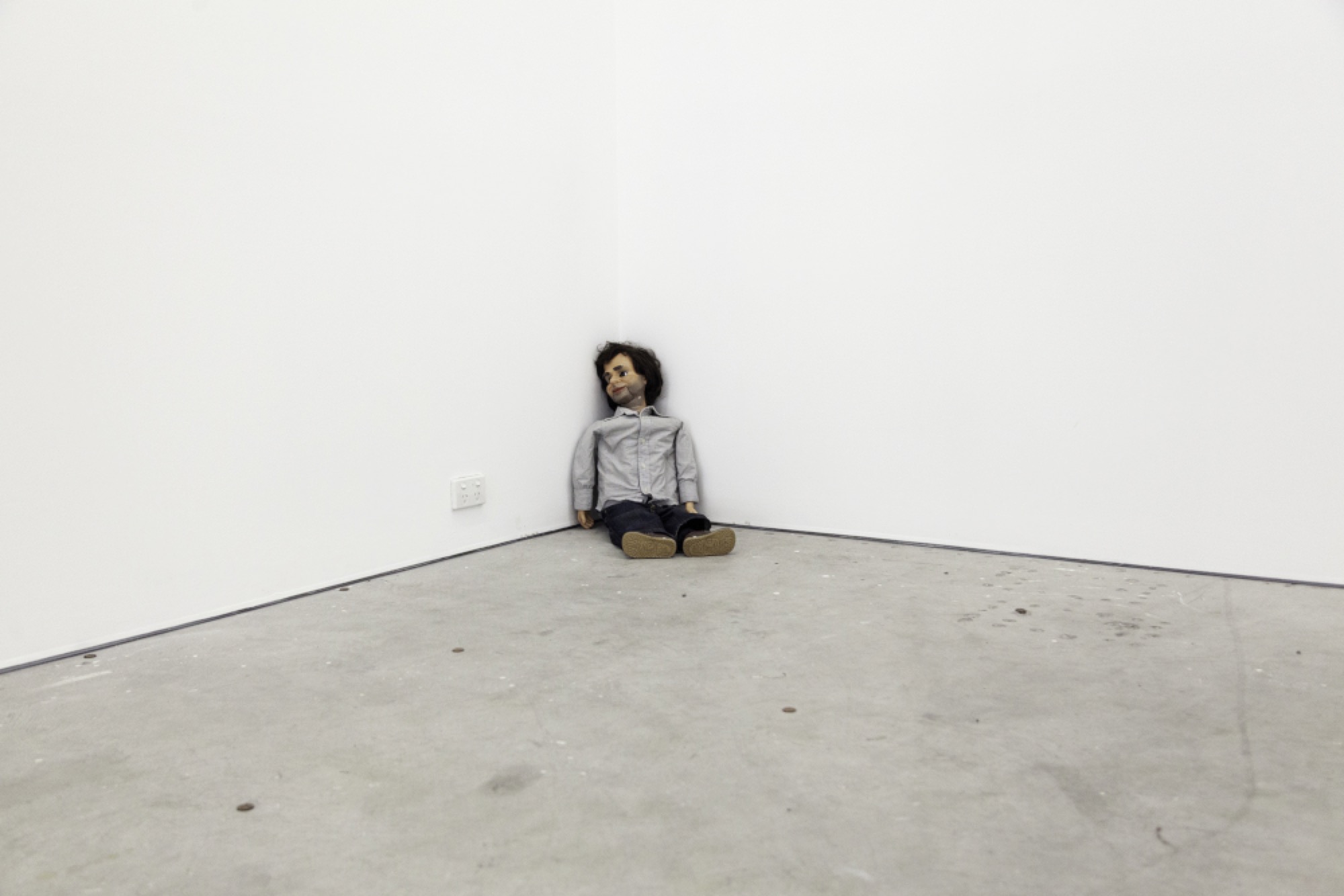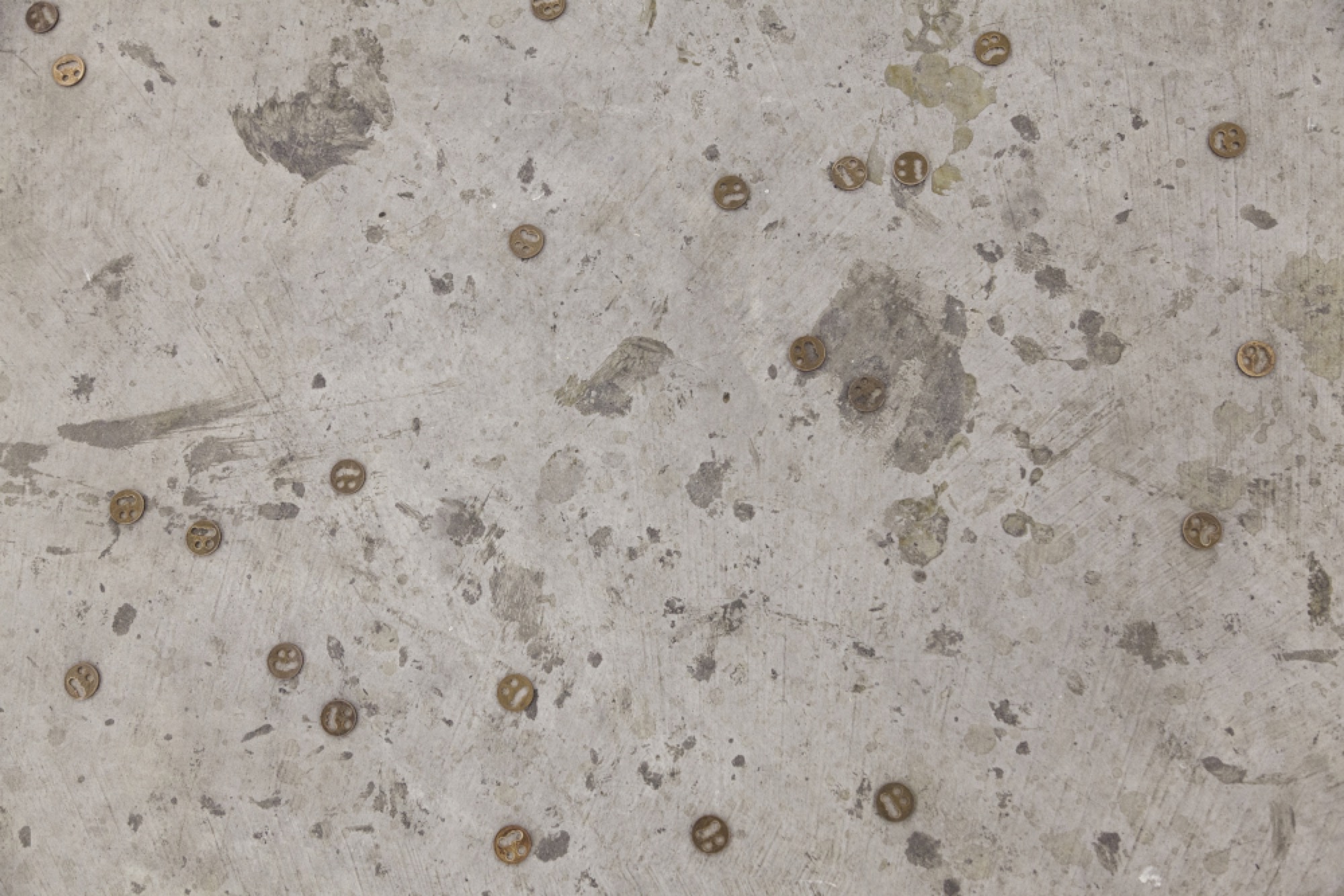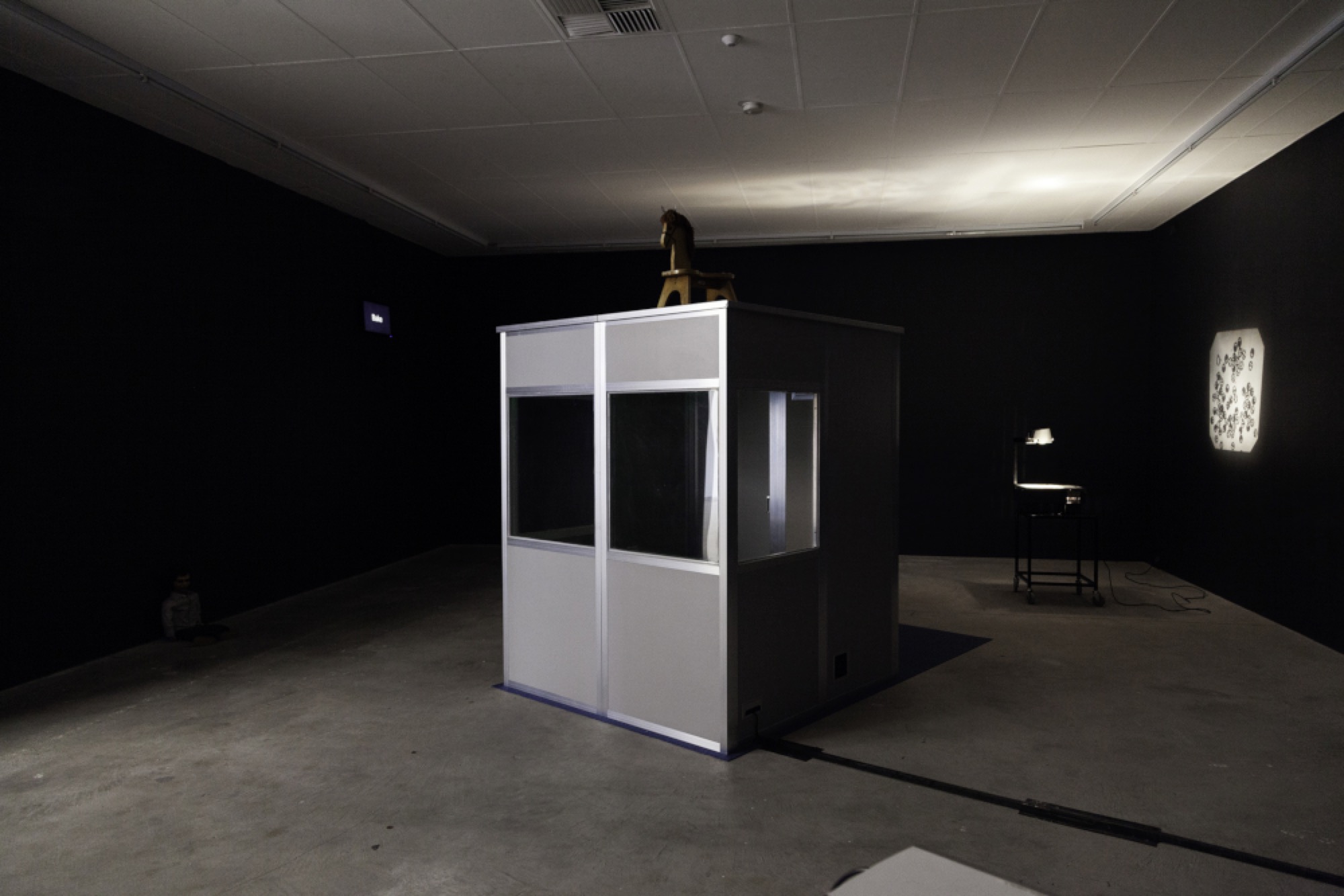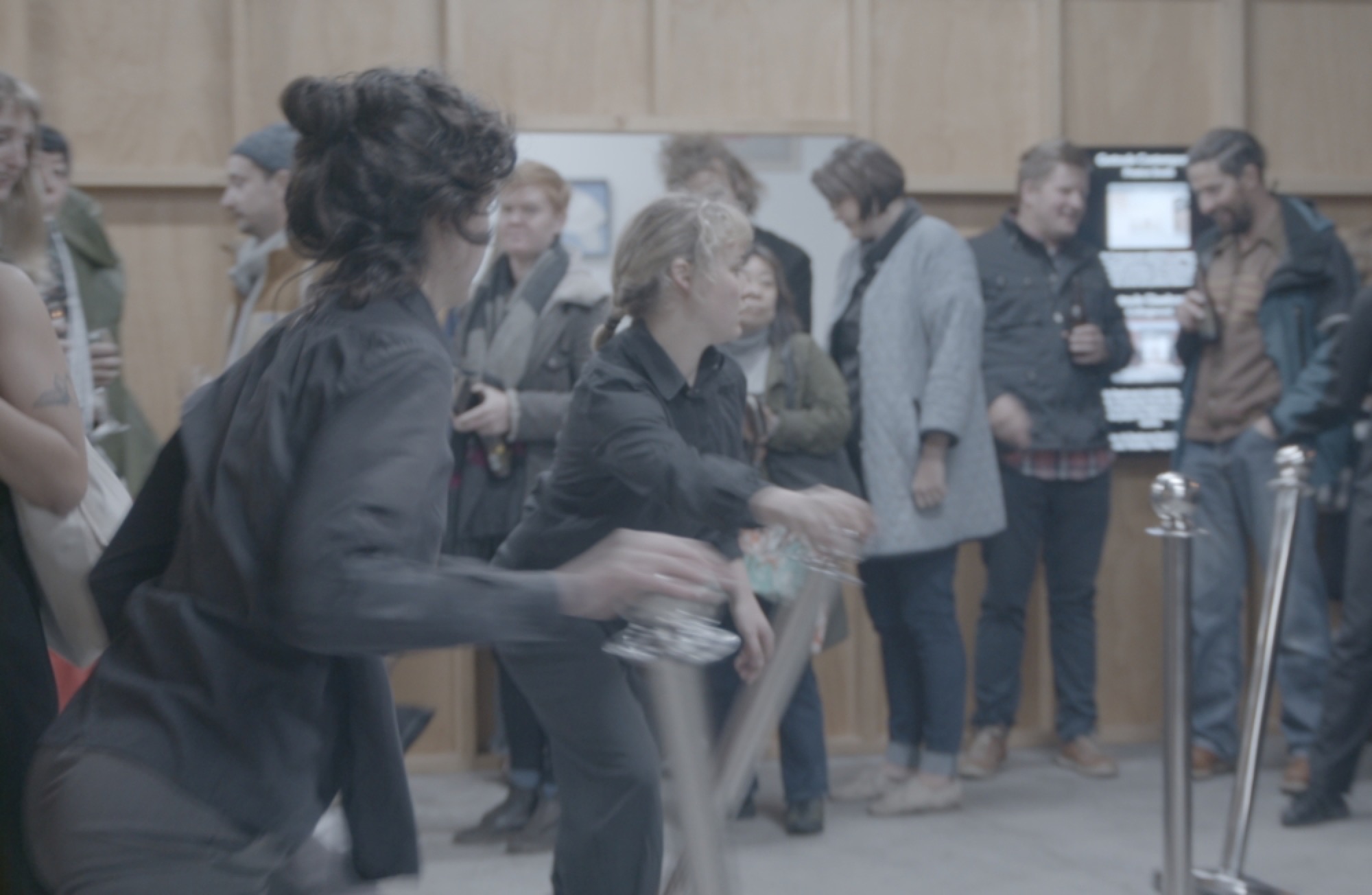Octopus 19: Ventriloquy
Audrey Schmidt
The 19th edition of Gertrude Contemporary’s Octopus series, curated by Joel Stern, centres on the generative theme of ventriloquy. The comic, the sinister, the vaudevillian, the carnivalesque, the macabre, the puppet master, the pathological, the perverse all strike me as the most immediate connotations.
It is no surprise, however, that the curatorial focus is sound. For years, Stern has demonstrated a tireless dedication to experimental sound art as co-director of Liquid Architecture (along with Danni Zuvela), a fact that also shows in both the exhibition’s extensive public program that stretches until July and the very scholarly explication of its ideas in a comprehensive media release.
In her The Age review on Sunday, Hannah Francis describes Liquid Architecture as an artist collective. Given that LA has every tier of government funding as well as several sizable local council grants, a forthcoming journal and a private giving program, I would be more inclined to call them an institution and do away with the penniless bohemian connotations.
Nevertheless, this exhibition was a chaotic sort of collaboration.

Walking through the doors at Gertrude Contemporary I was met with cacophonous noise, rendering the task of distinguishing one soundscape from another virtually impossible. It was a chaos offset by visual cues of the exhibition that felt much more like a corporate office building under construction. For Franco “Bifo” Berardi in Breathing: Chaos and Poetry, ‘chaos’ is a problem of tempo. Confronted with uninterpretable flows of neurostimuli in an infosphere that moves too fast for us possibly to decode or decipher, we feel compelled to sync our breathing (our own intimate internal rhythm of interpretation) to the pace of economic competition and digital time—leaving us breathless. One of the many ideas outlined in the exhibition description was the tendency to conflate ‘having a voice’ with political agency. Beyond the post-19th century shift from ‘being heard’ to ‘being seen’ in an ever-growing image economy, as Bifo makes clear, power is no longer enacted by silencing the crowd but by the intensification of noise.
Friday night’s opening and Saturday’s opening performances felt like riding a ghost train through a haunted funhouse. Finding order in chaos, Gabriella D’Costa’s pedestal signs were strategically placed throughout the foyer and Gallery 1, guiding you from point A to point B with ominous, absurdist bureaucratic cautions such as: “Standing too fast can result in dizziness, fainting, and, in some circumstances, death. Death reduces operative wellbeing and productivity.” To me, D’Costa was questioning the widespread “wellness” injunction of capitalism by asking: For whom are we ‘well’? Under capitalism, to be sick or unwell is, above all, to be unable to work. The warped and distorted signs, with their double-vision instructions, looked as though they were printed on a photocopier on its last legs—a glitch in the system.

In Gallery 1, Ceri Hann’s coins with punctured faces, Money Talks, (happy, sad, indifferent) are scattered over the floor and Simon Zoric’s dummy-double sits slumped in the corner, abandoned at some distance from its accompanying video work, spectrally listed in the room sheet as ‘roaming.’ The film follows Zoric unboxing his ventriloquist dummy and dressing it in his likeness before the scene cuts to another box that wiggles and pulsates until Zoric himself busts out of it wrapped in Laura Palmer plastic. The rest of the video follows Zoric with dummy as companion, reading to him in bed, watching TV and working in a call centre to the soundtrack of David Bowie’s Sound and Vision (1977). Made as a part of Zoric’s VCA Honours project in 2009, this work was presumably selected for its literal interpretation of the theme and certainly added to the show’s ‘funhouse’ affect.

After walking through Mel Deerson and Briony Galligan’s Theatre curtain for heaven and hell (2018), which separates the light white walls of Gallery 1 from the dark black box of Gallery 2 (heaven and hell), Eric Demetriou’s sculptural assemblage appears in the centre of the darkened room like the set of an abandoned control room in a disintegrating laboratory, or the temporary partitions of an office booth deserted during a fire drill. With a funny little rocking horse on top of the booth structure, the sense of apocalyptic disintegration was offset by the absurd.
At a certain point in the evening, Megan Payne and Hilary Goldsmith, dressed in usher black, appeared dragging weighted silver bollards, which toppled and swung around like spinning tops before popping back into their authoritative upright positions. They made their way through the foyer, swinging the red bollard rope around their heads, feet wide, like a performing arts admin with a lasso—about to let you know that the buffet is for guests only (imagine we’re at the Arts Centre where there’d more likely be both a buffet and bollards).

An accompanying video work of the performance was central to Gallery 1, where the screen was attached to heavy duty temporary fencing you’d expect to see at a festival or construction site, flashing with statements in bold white text such as “UNABLE TO BREATH.” The implication here was ‘crowd control,’ as comparable to mustering livestock, particularly as it relates to the performing arts infrastructure. The performers were followed closely Jacqui Shelton, mitigating risk like a security guard, as well as a Liquid Architecture camera operator (or two?) that gave the work the added feel of the paparazzi—following the stars at a red-carpet event. This was perhaps the most apparent consequence of the work, regardless of it likely being relatively unintentional.

Danielle Freakley met me at the entrance on arrival with a dusty pink instructional card with pixelated mauve florals and cursive text, like an inexpensive wedding invitation, as a part of her work, Equal Opportunity To Be a Dictator (2017). The card reads in all-caps, as though shouting what felt more like vaguely threatening instructions than an invitation:
YOU'RE INVITED! HERE, YOU ARE INVITED TO ASK ANYONE TO SAY ANYTHING YOU WANT (they might say it).
BEWARE, OTHER PEOPLE MAY COME TO YOU AND ASK YOU TO SAY ANYTHING THEY WANT (are you interested?).
The second time she approached me with another card and a mutual friend. When she said “Say hello,” I did as I was told, but promptly quoted the back of the card which read “Nobody has to say or do anything they don’t want to,” under the ‘BOUNDARIES’ subheading. She persisted, and a tediously frustrating ‘conversation’ unfolded, like one of those “I know you are you said you are but what am I” childhood interactions that leads nowhere and elides any sort of conversational progression. Perhaps this is due in part to my resistance to exerting the level of thought, energy and time necessary to ‘make it work’ (and literally ‘make the work’). But I suppose that is the point. It’s not meant to be easy—but she’s proving she can do it.
When Freakley’s life-art performance practice was on Enough Rope with Andrew Denton in 2008 to discuss her durational three-year public art project, The Quote Generator (2008), where the artist only spoke in quotes, instantly attributed, for three years, Denton eventually joked by telling Freakley to “shut up,” quoting Monty Python (1972). My feelings were aligned with Denton’s, which, again, is perhaps the point. On the room sheet, Zoric writes of his work, “the whole time I was making the work I was too embarrassed to try and make him ‘talk’.” Like Zoric’s mute dummy, I was reluctant to become Freakley’s mouthpiece. David Goldblatt, quoted in the exhibition catalogue, writes “ventriloquism is illusion without deception—a truly deceived audience would undermine the nature of the act.” In Freakley’s case, I was not ‘doing’ the self-conscious illusion bit, I didn’t want to be in on the act—a friction that was no doubt intended.
For theorists such as Miwon Kwon, Rosalyn Deutsche and Claire Bishop, ideas of democracy and community must be reimagined so as to incorporate conflict and friction as fundamental aspects of social relations—placing disruption at the forefront of socially engaged and participatory practices. ‘Dictator,’ in the context of the title of Freakley’s work is homonymous—invoking both the autocratic and the act of reading or saying aloud. Both meanings, however, seem to contain the first—the second implying the presence of a bureaucratically inferior counterpart who is not ‘conversing’ so much as transcribing. So, the ‘equal opportunity,’ felt more like Freakley’s opportunity to ‘conscript’ everyone, equally, into her work. In addition to a video work of the same name documenting prior interactions resulting from the project,Ventriloquy includes two other works of hers: Your Second Hand (2019) and I Anticipate Your Every Breath (ongoing). However, perhaps predictably, when I asked her: “Say, how these works are related,” we didn’t get anywhere. My impression was that they are only related insofar as they are by Freakley—whose life is her practice and vice versa. It is an artistic position I believe warrants reconsideration, beyond modernism and 90s relational aesthetics, under contemporary conditions of advanced capitalism where life is absorbed and marketed to unprecedented extents—i.e. where such a condition is hyper-normalised.
For Saturday’s opening performances, those in attendance were first ushered down to Gertrude’s basement, following the leader (Stern) in a fashion very much in keeping with the ghost train sentiment. Crowded into the narrow basement, Melody Paloma and her collaborators performed their reimagining the late Hannah Weiner’s Code Poems (1982) — her primary collaborators being retired seafarers, Neil Butt and Leigh Webster, who enacted the code with mariner semaphore (flag) signals. Based on the International Code of Signals For the Use of All Nations, Weiner performed a number of her code poems in the 60s and 70s using semaphore signals, morse code, flag hoists, flashing light signals, megaphones and flares. All of which, aside from the flag hoists, appeared in Paloma’s re-enactment. Seeing Weiner’s Romeo and Juliet code poem performed live, brought the little-known artist to life and was truly comedic. Lawfully waving their flags, in all the officious combinations, the seafarers were completely unable to keep a straight face as they signalled the code for a conventional cis-het relationship:
From start:
OYP Juliet: Horny BKS Idiot IVL You are too close. Keep farther off. DN I have orders for you not to touch HFL Romeo: Will you breakfast with me?
Audrey Schmidt is a writer and Melbourne Personality.


